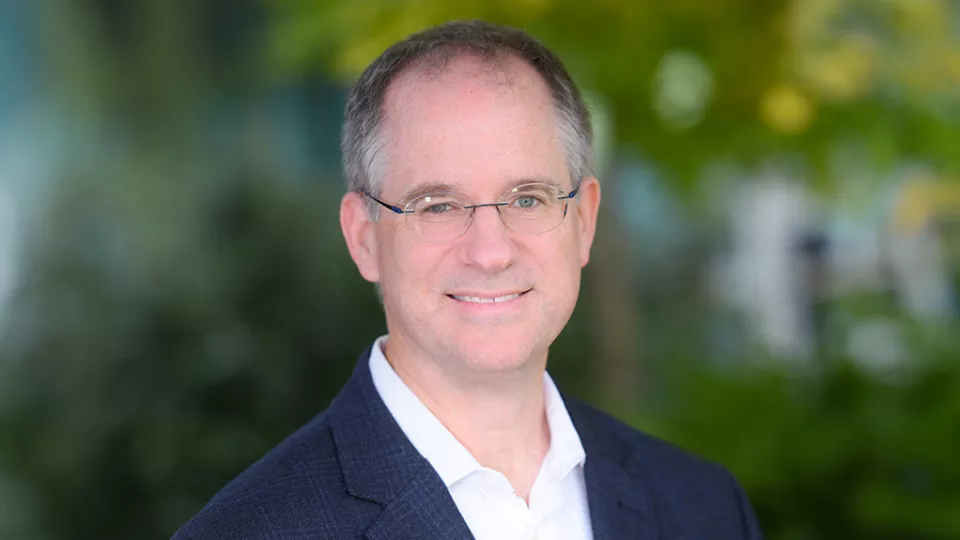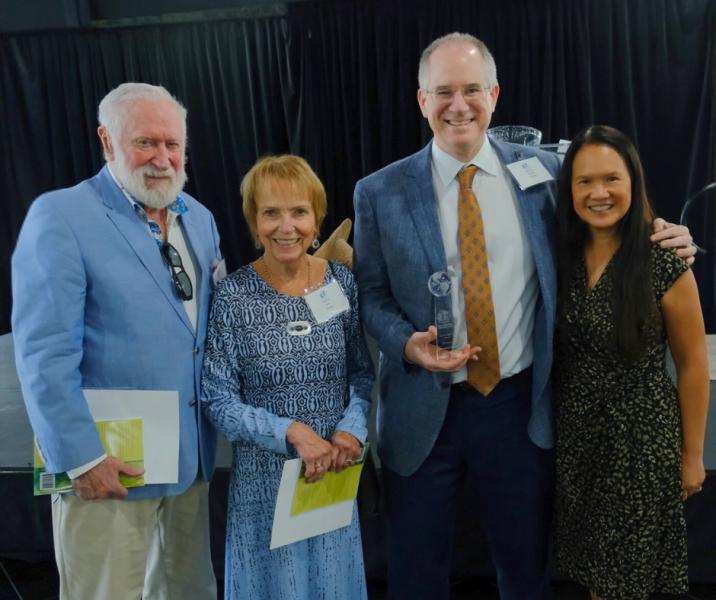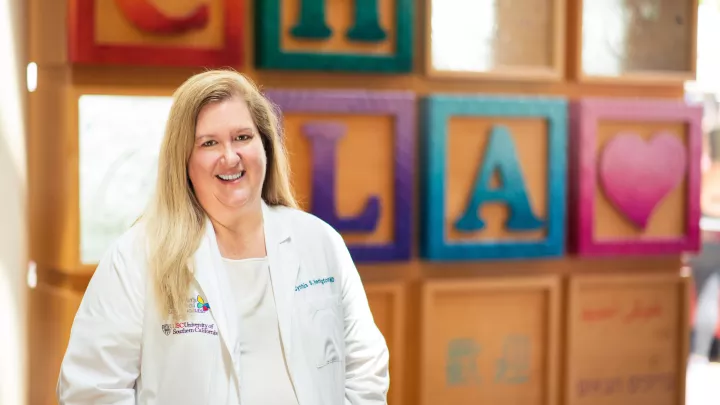
Jondavid Menteer, MD
CHLA Cardiologist Honored by World Children’s Transplant Fund
On Sept. 18, Children’s Hospital Los Angeles cardiologist Jondavid Menteer, MD, was honored with the World Children’s Transplant Fund “WCTF for the Children Award.”
The prestigious award—presented at a special World Children’s Transplant Fund luncheon in Van Nuys, California—recognized Dr. Menteer for 20 years of dedication and leadership in pediatric heart transplant at Children’s Hospital Los Angeles, which is home to the largest heart center for children in the Western U.S.
Dr. Menteer has spent his entire career at CHLA—joining the Heart Institute in 2004 and serving as Medical Director of the Heart Transplant Program since 2007. He also founded the hospital’s Cardiomyopathy and Heart Failure Program, now led by Jennifer Su, MD, and served as CHLA Chief of Staff from 2021 to 2023.
He reflects on his long history at CHLA, how pediatric heart transplant care is changing—and what he loves most about his work.
What does this award mean to you?
I’m extremely humbled and honored to be recognized by the World Children’s Transplant Fund. That said, transplantation is a team effort. Any success I have had is not mine alone. It’s a shared success with the team I love and work with here at Children’s Hospital Los Angeles.
How has pediatric heart transplant care improved during your career?

When I started at CHLA, the biggest hurdle was getting kids to survive the long wait for a heart. One of the things I’m most proud of was working with my colleague Cynthia Herrington, MD, now Surgical Director of the Heart Transplant Program, to bring the Berlin Heart to CHLA in 2008. At the time it was still investigational, and it was the only ventricular assist device for children.
That was a major turning point, and CHLA went on to become one of the leading Berlin Heart centers in the country. And while it’s no longer new technology, it’s still the workhorse that allows us to bridge many younger patients to transplant.
What are some of the major challenges today in caring for kids who need a heart transplant?
Mechanical support in children remains very risky, especially because—thanks to the skill of our surgical team—we're now taking on more complicated cases, including patients with single-ventricle circulations.
But one of the biggest challenges is after transplant: How do we get that new heart to last a lifetime? As a field, we’ve made significant progress in improving outcomes in the first one to three years after transplant. So today, the average donor heart lasts 20 years. But over time, patients still develop chronic rejection and have an erosion of health.
How do you see care evolving? What’s on the horizon?
I think the next frontier is about preventing that chronic rejection. I’m working on research right now with Lee Ann Baxter-Lowe, PhD, dABHI, and Rachel Lestz, MD, MHS, that involves using a new technology to image human leukocyte antigen (HLA) expression in heart biopsy specimens.
HLA antigens play a key role in organ rejection, and we’re trying to better understand those mechanisms. The immune system is a tricky thing. The goal is to never let it know that the genetics of the donor organ are different from the self. I’m also working with that team on new technologies for examining novel biomarkers of donor heart health.
The hope is that we can eventually develop therapies that are more intelligently designed to target this problem of rejection—so a heart can last 40 years instead of 20.
What is most rewarding for you about your work?
First, the amount of teamwork at the Heart Institute is second to none. Our surgeons are incredible partners, but we also collaborate with our social workers, intensivists, nurses, transplant coordinators and more. It’s an extraordinary team of really dedicated people, and that’s a big reason why we have such excellent outcomes.
And while I enjoy research, the thing that is the most rewarding for me is caring for our patients and families. I see babies and kids going through heart failure, and then—either because of a transplant or another treatment we provide—they come out the other side and thrive. That’s what brings me the most joy.


